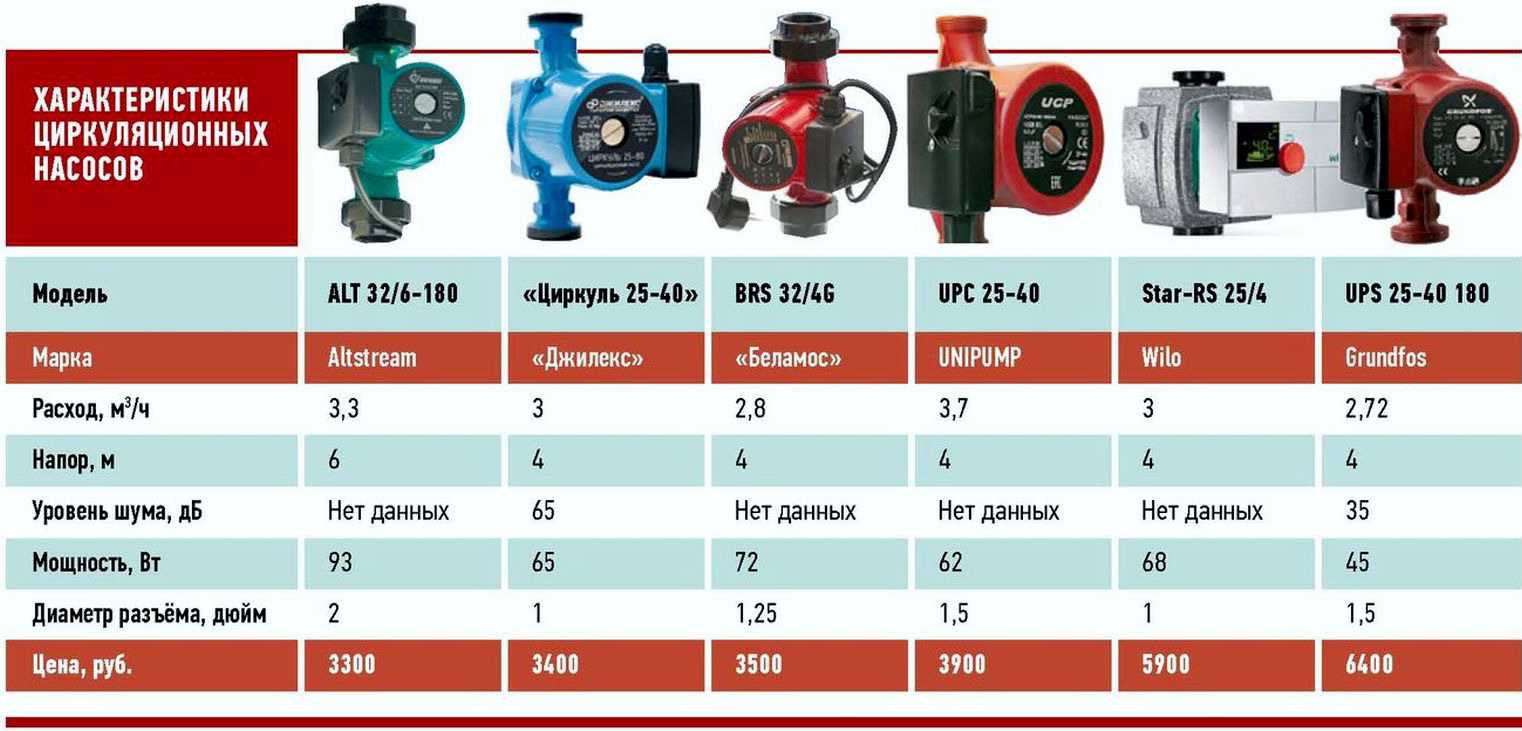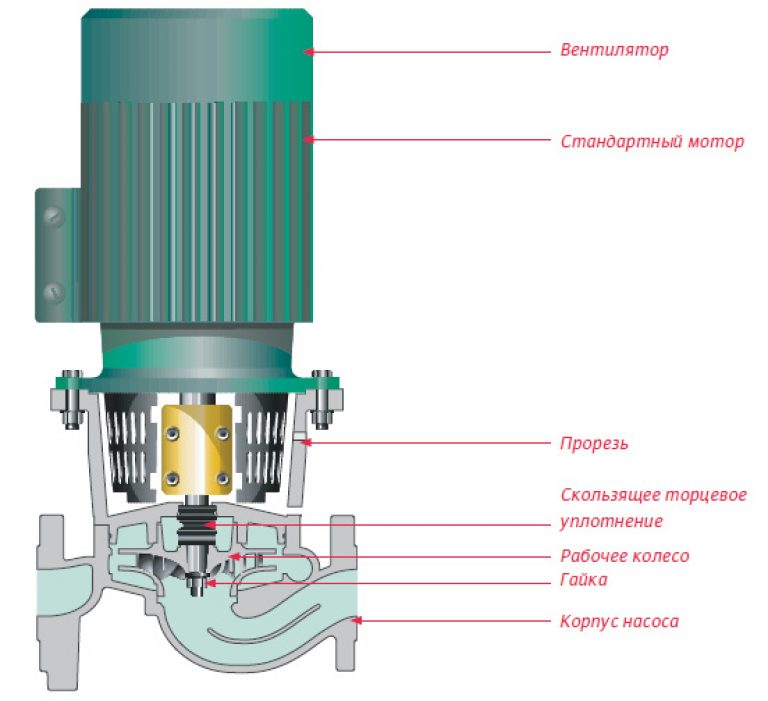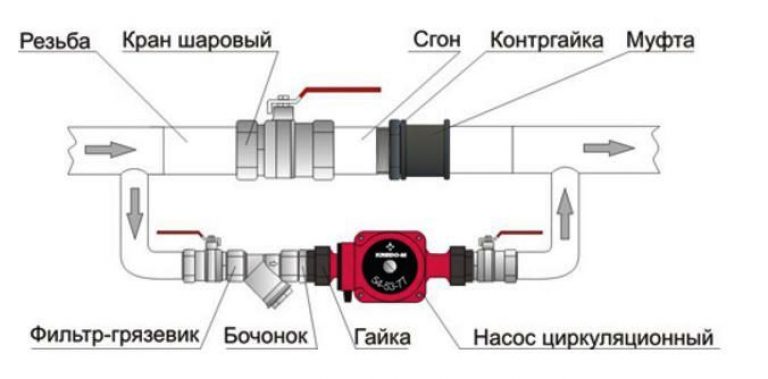How to choose a pump for heating: basic rules
For efficient heating of private houses, a circulation pump is required in the heating system. Thanks to this device, a continuous circulation of the coolant through the pipes is carried out. The room heats up evenly and quickly. At a high or low speed of movement of the coolant, the heating of the house is uneven. Therefore, one should carefully approach such an issue as the selection of a circulation pump for a heating system.
The selection of a circulation pump for heating does not depend on what kind of fuel is needed for the heating boiler.
1 Why do you need a pump in the heating circuit?
The natural circulation of the liquid in the heating circuit is ineffective, since the liquid constantly overcomes resistance, and this slows down its movement. This leads to the fact that the liquid returns to the boiler cooled, and this requires additional costs for its additional heating.
The use of narrower pipes only partially solves the problem, but the renovation costs are much higher than for the circulation pump.
Forced circulation forces the liquid to move faster around the circuit of the system and return to the boiler not very cooled. Fuel consumption costs are therefore reduced.
In systems without a pump, a large volume of coolant is required to maintain the required temperature. This will require both large diameter pipes and radiators with wide blades.
In forced circulation, a large volume of liquid is not needed. Therefore, pipes with a smaller diameter will do. And this is saving on materials.
The disadvantage of this type of heating is its energy dependence. The device operates on electric current.
1.1 Construction
Most devices of this design:
- the body to which the snail is attached;
- pipes of the system are connected to the snail;
- the housing contains an electric motor with terminals and a control board;
- a rotor with an impeller, thanks to which the movement of water occurs.
When the pump is operating, a vacuum is obtained at the inlet of the device and the desired outlet pressure.
2 Types of devices
There is a fairly large selection of circulation pumps on the market. How to choose a pump for heating? The most common circulation pumps are wet and dry rotor devices.
2.1 Wet rotor mechanism
In a device with a wet rotor, the impeller and the rotor are in the heating medium. This helps to cool the pump motor and the device is protected from overheating. These parts are made of non-corrosive materials.

The disadvantage of this type of device is that they have a low efficiency. The advantages of this type:
- low noise level;
- availability;
- does not need regular maintenance.
Wet rotor units are used for heating small houses. Low pump power allows you to choose a circulation pump for heating this type in cases where the volume of liquid in the system is small.
2.2 Apparatus with dry rotor
The impeller in this type of device is located in the coolant, and the rotor is protected from liquid by sealed gaskets.
Selection of a pump for a heating system of this type will show the advantage in high pump power. Thanks to this, it is used in rooms with a large area. The device has a fairly high efficiency.
However, a dry rotor pump also has disadvantages:
- vibration and noise levels are high enough;
- as a result of the rapid use of the grease, it needs regular servicing.
3 What to look for?
Before proceeding with the selection of a pump for a heating system, you should decide what characteristics it should have. What apparatus is needed for heating a private house and what to look for in order to make the best choice of a circulation pump for a heating system:

The circulation pump can be installed in two ways. This also affects the selection of the pump for heating.
- Built directly into the boiler - observed in many modern models.
- The pump is welded as a separate part of the heating circuit. It is used more often in older models of heating boilers. The circulation of water in the systems occurred due to the difference in density and mass of cold and hot heat carrier. Pipes in such systems were placed at a slope. The introduction of a circulation pump into such a system increases the speed of movement of the coolant and, therefore, the room is heated faster.
In the question of how to choose a pump, the characteristic features of the heating system are also taken into account.
- Heating system type. For networks with natural circulation, it is recommended to install a device with a wet rotor with a power of up to 50-60 W. If the circulation is forced, a more powerful unit is needed up to 80 W if there is a slope, and up to 90 W without a slope.
- Heated area and volume of the coolant. The higher these parameters, the more powerful the mechanism is needed. To calculate the exact power of the device, it is recommended to contact a teletechnician.
- Limitation on the maximum noise level. For heating a private house, where a separate room for the pump is not provided at a sufficient distance from the living rooms, it is not recommended to choose devices with a dry rotor.
- The technical condition of the heating system. Any pump will fit the new heating system. For systems that are 15-20 years old or more, it is necessary to take into account the presence of impurities in the liquid. 25-35% is added to the calculated power, especially when choosing a device with a wet engine. However, for old networks, a device with a dry rotor is better suited, because it is less sensitive to the quality of the liquid.
4 How to choose the right pump?
In order to choose the right circulation pump for the heating system, you need to take into account that the device must meet certain criteria:

In the last point, the wet type pump undoubtedly wins, it is smaller and quieter. But other criteria should be dealt with.
4.1 Calculation of pump performance
Pump performance implies the amount of heat carrier distilled, its consumption at the lowest device load. The higher the performance, the better.
Calculation of the pump according to the performance criterion can be according to the formula: Q = N / (t 2 - t 1), where Q is the required capacity value, N - corresponds to the power of the heating boiler, t1 is the value of the liquid temperature in the “return” of the circuit, t2 is the temperature indicator in the supply compartment, after the heating boiler.
Using this formula, you can approximately select the parameters of the required pump. It is believed that for 10 m of the loop ring, approximately 0.6 m of the pump head is needed.
4.2 Device pressure
Appliance pressure - the level to which the appliance can raise water in the heating circuit. Usually this parameter is indicated in the documents for the mechanism and on the pump itself.
For example, heating pumps model GRUNDFOSUPS25-40. The numbers in this brand mean:
- 40 - liquid rise height - 4 m or 0.4 atm. pressure. This value is taken into account in the first place when choosing a pump.
- 25 - diameter of the pipes to be connected - 25 mm. Usually pipes with a diameter of 32 and 25 mm are used.
Therefore, when wondering how to choose the right circulation pump, you should take into account the full name of the pump. It must match the diameter of the pipes in the system. The pump also indicates the power consumption, the direction of movement of the rotor, the number of revolutions.
4.3 External aspects
The operation of the device and the amount of heat required also depend on the ambient temperature. An incorrectly selected pump can start to overheat, because it may not be able to cope with the excessive load, which means that before calculating the necessary parameters of the device, you should know well the characteristics of the boiler and the heating system.

For pipes with a large diameter, the circulating coolant will have a larger volume and, therefore, a more powerful pump will be needed. For a coolant made from an anti-freeze liquid, as a rule, a pump should be selected more efficient and reliable.
4.4 Power calculation
The power of the circulation pump for heating depends on the area of the room that is heated. For example, the area is 200 m 2. To keep the building warm, they adhere to the approximate ratio: 1 kW of thermal energy per 10 m 2. Therefore, this area will require 20 kW.
Next, you need to calculate the temperature difference on the supply and return circuits. Experts advise within 10ᵒC. The power is calculated: 20: 10 = 2. The parameter calculated in this way is the pump power, measured in m 3 / h.
The calculation of the circulation pump is also carried out according to the parameters of the amount of required heat, pipe resistance, power consumption, and the maximum temperature level.
How to choose a circulation pump for heating in order to make the system work most efficiently? For the correct selection, many factors, parameters and characteristics of pumps and heating systems, as well as external conditions and the expected result should be taken into account. You can also take into account the reviews about a particular brand of the device. They approach the choice responsibly, because the comfort in the house largely depends on it.



